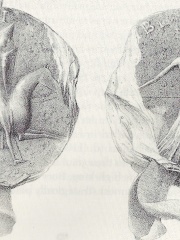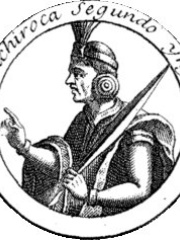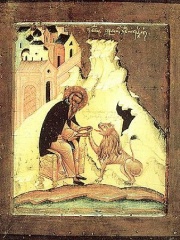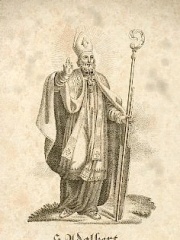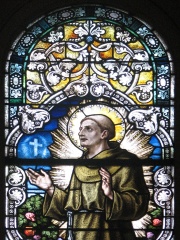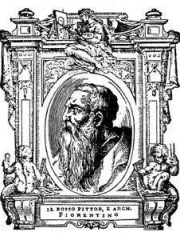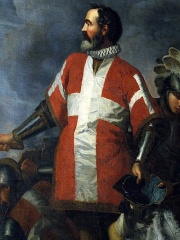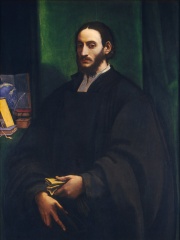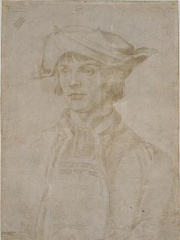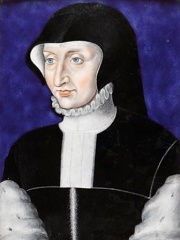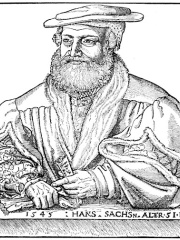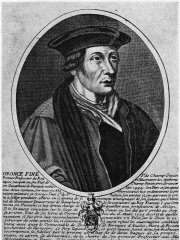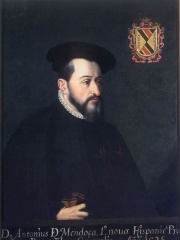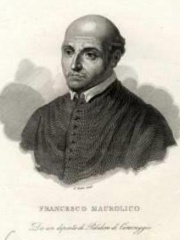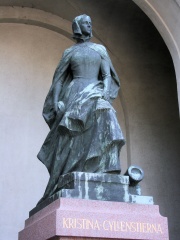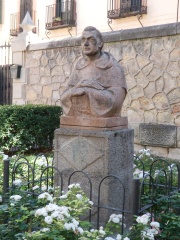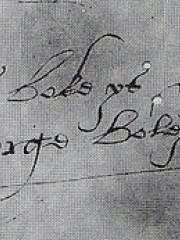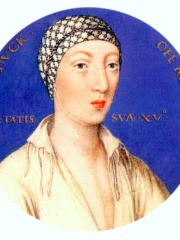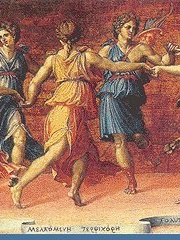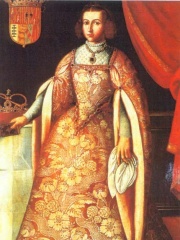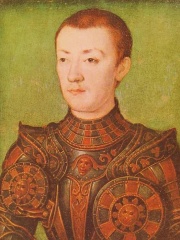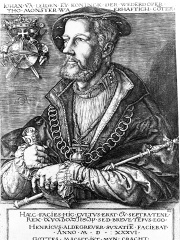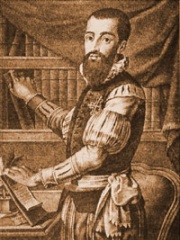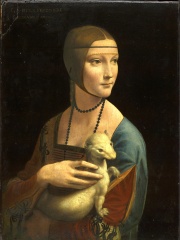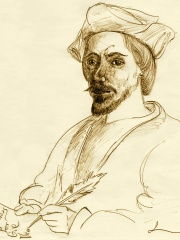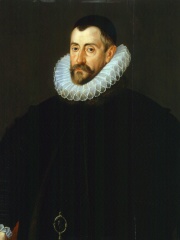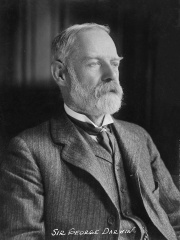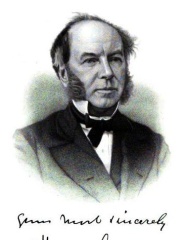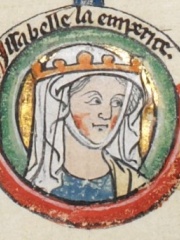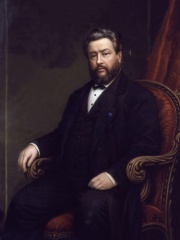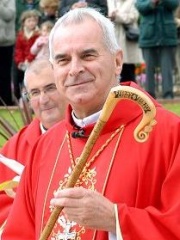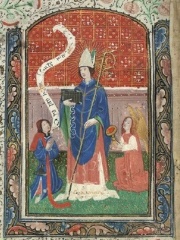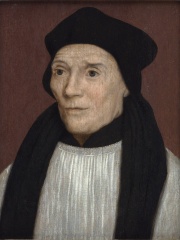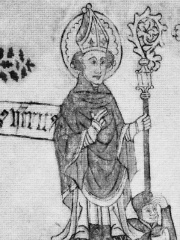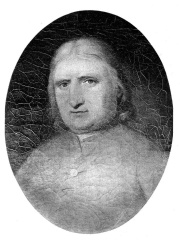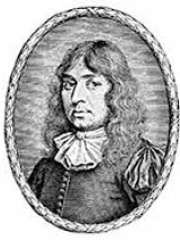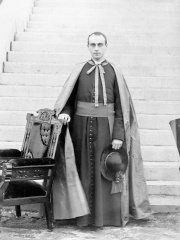RELIGIOUS FIGURE
William Tyndale
1494 - 1536
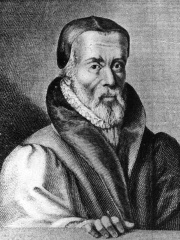
 William Tyndale
William Tyndale
William Tyndale (; sometimes spelled Tynsdale, Tindall, Tindill, Tyndall; c. 1494 – October 1536) was an English Biblical scholar and linguist who became a leading figure in the Protestant Reformation in the years leading up to his execution. He translated much of the Bible into English and was influenced by the works of prominent Protestant Reformers such as Martin Luther. Tyndale's translations were the first English Scriptures to draw directly from Hebrew and Greek texts, the first English translation to take advantage of the printing press, the first of the new English Bibles of the Reformation, and the first English translation to use Jehovah ("Iehouah") as God's name. It was taken to be a direct challenge to the authority of the Catholic Church and of those laws of England maintaining the Church's position. Read more on Wikipedia
His biography is available in 47 different languages on Wikipedia (up from 46 in 2024). William Tyndale is the 1,079th most popular religious figure (down from 788th in 2024), the 1,191st most popular biography from United Kingdom (down from 722nd in 2019) and the 25th most popular British Religious Figure.
William Tyndale was a scholar and translator of the Bible. He was the first person to translate the Bible into English, which is now known as the Tyndale Bible.
Memorability Metrics
Page views of William Tyndale by language
Among RELIGIOUS FIGURES
Among religious figures, William Tyndale ranks 1,079 out of 3,187. Before him are Richard de Clare, 2nd Earl of Pembroke, Patriarch Theophilos III of Jerusalem, Sinchi Roca, Sebeos, Gerasimus of the Jordan, and Adalbert of Magdeburg. After him are Antonio Cañizares Llovera, Yamamoto Tsunetomo, Sufyan al-Thawri, Ernest Simoni, Peter of Alcantara, and William M. Branham.
Most Popular Religious Figures in Wikipedia
Go to all RankingsRichard de Clare, 2nd Earl of Pembroke
1130 - 1176
HPI: 66.26
Rank: 1,073
Patriarch Theophilos III of Jerusalem
1952 - Present
HPI: 66.24
Rank: 1,074
Sinchi Roca
1230 - 1260
HPI: 66.23
Rank: 1,075
Sebeos
700 - 700
HPI: 66.22
Rank: 1,076
Gerasimus of the Jordan
500 - 475
HPI: 66.20
Rank: 1,077
Adalbert of Magdeburg
910 - 981
HPI: 66.19
Rank: 1,078
William Tyndale
1494 - 1536
HPI: 66.18
Rank: 1,079
Antonio Cañizares Llovera
1945 - Present
HPI: 66.14
Rank: 1,080
Yamamoto Tsunetomo
1659 - 1719
HPI: 66.14
Rank: 1,081
Sufyan al-Thawri
716 - 778
HPI: 66.12
Rank: 1,082
Ernest Simoni
1928 - Present
HPI: 66.12
Rank: 1,083
Peter of Alcantara
1499 - 1562
HPI: 66.12
Rank: 1,084
William M. Branham
1909 - 1965
HPI: 66.12
Rank: 1,085
Contemporaries
Among people born in 1494, William Tyndale ranks 14. Before him are Rosso Fiorentino, Jean Parisot de Valette, Leo Africanus, Lucas van Leyden, Antoinette de Bourbon, and Hans Sachs. After him are Oronce Finé, Antonio de Mendoza, Francesco Maurolico, Christina Gyllenstierna, Saitō Dōsan, and Domingo de Soto. Among people deceased in 1536, William Tyndale ranks 11. Before him are George Boleyn, 2nd Viscount Rochford, Henry FitzRoy, 1st Duke of Richmond and Somerset, Baldassare Peruzzi, Germaine of Foix, Francis III, Duke of Brittany, and John of Leiden. After him are Garcilaso de la Vega, Cecilia Gallerani, Gil Vicente, Frederick I, Margrave of Brandenburg-Ansbach, Ibn Kemal, and Felice della Rovere.
Others Born in 1494
Go to all RankingsRosso Fiorentino
PAINTER
1494 - 1540
HPI: 71.75
Rank: 8
Jean Parisot de Valette
POLITICIAN
1494 - 1568
HPI: 71.65
Rank: 9
Leo Africanus
WRITER
1494 - 1554
HPI: 70.83
Rank: 10
Lucas van Leyden
PAINTER
1494 - 1533
HPI: 70.25
Rank: 11
Antoinette de Bourbon
POLITICIAN
1494 - 1583
HPI: 68.65
Rank: 12
Hans Sachs
WRITER
1494 - 1576
HPI: 68.56
Rank: 13
William Tyndale
RELIGIOUS FIGURE
1494 - 1536
HPI: 66.18
Rank: 14
Oronce Finé
MATHEMATICIAN
1494 - 1555
HPI: 64.67
Rank: 15
Antonio de Mendoza
POLITICIAN
1494 - 1552
HPI: 63.97
Rank: 16
Francesco Maurolico
MATHEMATICIAN
1494 - 1575
HPI: 63.32
Rank: 17
Christina Gyllenstierna
NOBLEMAN
1494 - 1559
HPI: 62.81
Rank: 18
Saitō Dōsan
MILITARY PERSONNEL
1494 - 1556
HPI: 62.44
Rank: 19
Domingo de Soto
PHILOSOPHER
1494 - 1560
HPI: 62.04
Rank: 20
Others Deceased in 1536
Go to all RankingsGeorge Boleyn, 2nd Viscount Rochford
POLITICIAN
1504 - 1536
HPI: 75.87
Rank: 5
Henry FitzRoy, 1st Duke of Richmond and Somerset
POLITICIAN
1519 - 1536
HPI: 75.04
Rank: 6
Baldassare Peruzzi
PAINTER
1481 - 1536
HPI: 70.79
Rank: 7
Germaine of Foix
NOBLEMAN
1488 - 1536
HPI: 69.50
Rank: 8
Francis III, Duke of Brittany
POLITICIAN
1518 - 1536
HPI: 67.60
Rank: 9
John of Leiden
RELIGIOUS FIGURE
1509 - 1536
HPI: 66.72
Rank: 10
William Tyndale
RELIGIOUS FIGURE
1494 - 1536
HPI: 66.18
Rank: 11
Garcilaso de la Vega
WRITER
1501 - 1536
HPI: 65.96
Rank: 12
Cecilia Gallerani
CELEBRITY
1473 - 1536
HPI: 65.57
Rank: 13
Gil Vicente
WRITER
1465 - 1536
HPI: 64.42
Rank: 14
Frederick I, Margrave of Brandenburg-Ansbach
POLITICIAN
1460 - 1536
HPI: 64.03
Rank: 15
Ibn Kemal
WRITER
1468 - 1536
HPI: 63.99
Rank: 16
Felice della Rovere
RELIGIOUS FIGURE
1483 - 1536
HPI: 63.16
Rank: 17
In United Kingdom
Among people born in United Kingdom, William Tyndale ranks 1,191 out of 8,785. Before him are Francis Walsingham (1532), Richard J. Roberts (1943), Francis Lee (1944), John McAfee (1945), Terry Jones (1942), and Kenneth Clarke (1940). After him are John Mayall (1933), Roddy McDowall (1928), Robert Powell (1944), George Darwin (1845), Thomas Andrews (1813), and Isabella of England (1214).
Others born in United Kingdom
Go to all RankingsFrancis Walsingham
POLITICIAN
1532 - 1590
HPI: 66.22
Rank: 1,185
Richard J. Roberts
CHEMIST
1943 - Present
HPI: 66.22
Rank: 1,186
Francis Lee
SOCCER PLAYER
1944 - 2023
HPI: 66.21
Rank: 1,187
John McAfee
BUSINESSPERSON
1945 - 2021
HPI: 66.21
Rank: 1,188
Terry Jones
ACTOR
1942 - 2020
HPI: 66.20
Rank: 1,189
Kenneth Clarke
POLITICIAN
1940 - Present
HPI: 66.19
Rank: 1,190
William Tyndale
RELIGIOUS FIGURE
1494 - 1536
HPI: 66.18
Rank: 1,191
John Mayall
MUSICIAN
1933 - 2024
HPI: 66.17
Rank: 1,192
Roddy McDowall
ACTOR
1928 - 1998
HPI: 66.17
Rank: 1,193
Robert Powell
ACTOR
1944 - Present
HPI: 66.16
Rank: 1,194
George Darwin
ASTRONOMER
1845 - 1912
HPI: 66.15
Rank: 1,195
Thomas Andrews
CHEMIST
1813 - 1885
HPI: 66.15
Rank: 1,196
Isabella of England
NOBLEMAN
1214 - 1241
HPI: 66.15
Rank: 1,197
Among RELIGIOUS FIGURES In United Kingdom
Among religious figures born in United Kingdom, William Tyndale ranks 25. Before him are Charles Spurgeon (1834), Reginald Lee (1870), Keith O'Brien (1938), Ninian (360), Frederick Fleet (1887), and Richard de Clare, 2nd Earl of Pembroke (1130). After him are John Fisher (1469), Henry (1100), George Fox (1624), Ælfheah of Canterbury (954), John Smyth (1570), and Rafael Merry del Val (1865).
Charles Spurgeon
1834 - 1892
HPI: 67.74
Rank: 19
Reginald Lee
1870 - 1913
HPI: 67.54
Rank: 20
Keith O'Brien
1938 - 2018
HPI: 67.28
Rank: 21
Ninian
360 - 432
HPI: 67.23
Rank: 22
Frederick Fleet
1887 - 1965
HPI: 66.53
Rank: 23
Richard de Clare, 2nd Earl of Pembroke
1130 - 1176
HPI: 66.26
Rank: 24
William Tyndale
1494 - 1536
HPI: 66.18
Rank: 25
John Fisher
1469 - 1535
HPI: 65.73
Rank: 26
Henry
1100 - 1156
HPI: 65.42
Rank: 27
George Fox
1624 - 1691
HPI: 65.22
Rank: 28
Ælfheah of Canterbury
954 - 1012
HPI: 65.16
Rank: 29
John Smyth
1570 - 1612
HPI: 65.10
Rank: 30
Rafael Merry del Val
1865 - 1930
HPI: 65.05
Rank: 31
